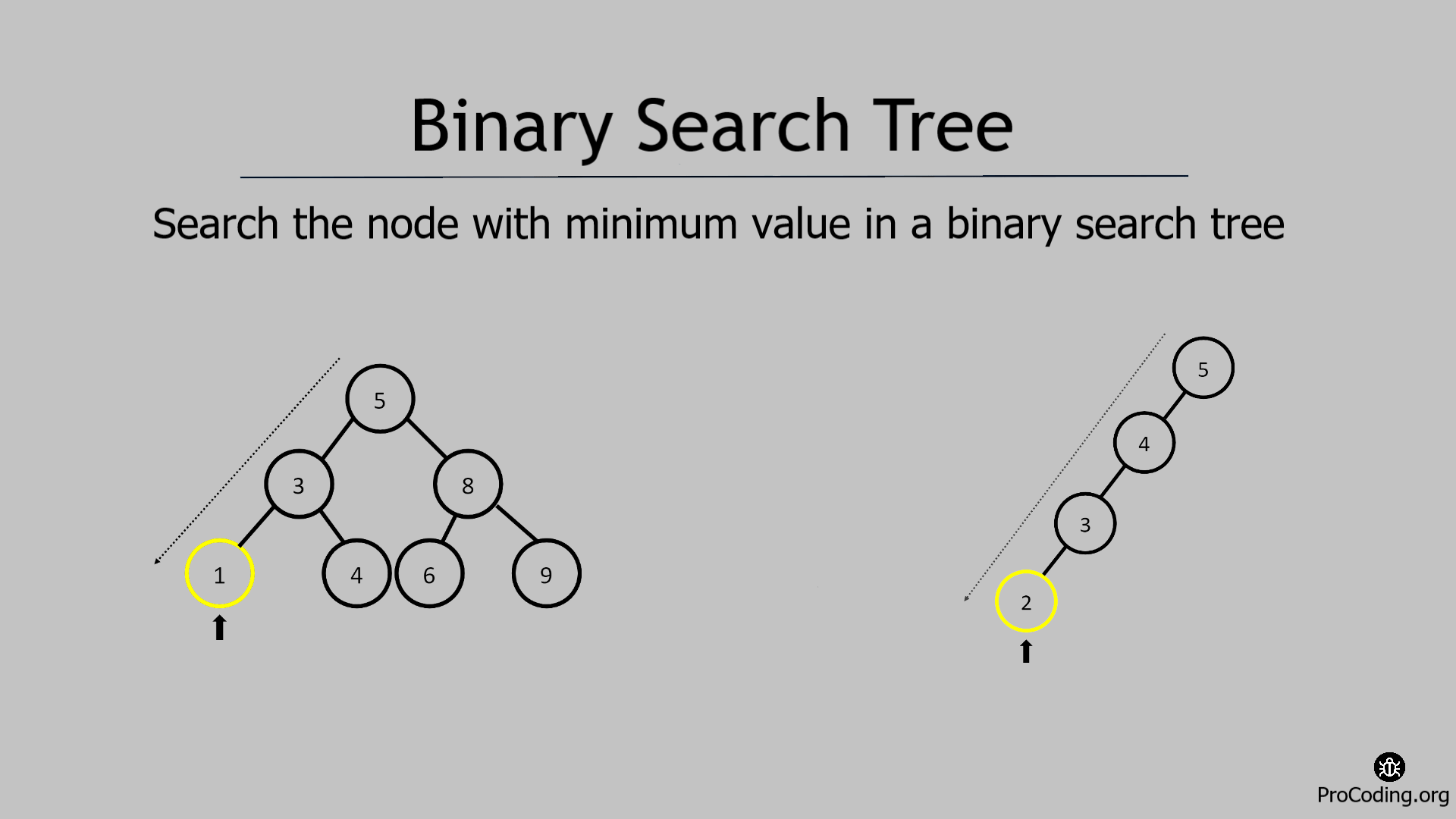Search the node with minimum value in a Binary search tree
Category: Data Structures
Search the node with minimum value in a binary search tree. To search a node with a minimum value in a Binary Search Tree, we have to traverse to the left-most node at the bottom.

To search a node with minimum value in a Binary Search Tree (BST), we have to traverse to the left-most node at the bottom.
Because, in BST small element is always on the left side so minimum element will be location on the left-most at the bottom.
Example -
Input:
5
/ \
3 8
/ \ / \
1 4 6 9
Output: 1
We can solve this problem in two ways-
Recursive solution
Algorithm
Find_Min(root)
1. if root is null then return null
2. if root.left is null then return root.data
3. else return Find_Min(root.left)
Python
class Node:
def __init__(self, data):
self.left = None
self.data = data
self.right = None
def find_min(root):
if root is None:
return None
if root.left is None:
return root.data
else:
return find_min(root.left)
bst_root = Node(10)
bst_root.left = Node(6)
bst_root.right = Node(16)
bst_root.left.left = Node(4)
bst_root.left.right = Node(9)
bst_root.right.left = Node(13)
bst_root.right.right = Node(20)
print(find_min(bst_root))
JavaScript
class Node {
constructor(data) {
this.left = null;
this.data = data;
this.right = null;
}
}
function findMin(root) {
if (root == null) {
return null;
}
if (root.left == null) {
return root.data;
} else {
return findMin(root.left);
}
}
const bstRoot = new Node(10);
bstRoot.left = new Node(6);
bstRoot.right = new Node(16);
bstRoot.left.left = new Node(4);
bstRoot.left.right = new Node(9);
bstRoot.right.left = new Node(13);
bstRoot.right.right = new Node(20);
console.log(findMin(bstRoot));
Output
4
Iterative solution
Algorithm
Find_Iter(root)
1. if root is null then return null
2. node = root
3. while node.left
4. node = node.left
5. return node.data
Python
class Node:
def __init__(self, data):
self.left = None
self.data = data
self.right = None
def find_min(root):
if root is None: return None
node = root
while node.left:
node = node.left
return node.data
bst_root = Node(10)
bst_root.left = Node(6)
bst_root.right = Node(16)
bst_root.left.left = Node(4)
bst_root.left.right = Node(9)
bst_root.right.left = Node(13)
bst_root.right.right = Node(20)
print(find_min(bst_root))
JavaScript
class Node {
constructor(data) {
this.left = null;
this.data = data;
this.right = null;
}
}
function findMin(root) {
if (root == null) {
return null;
}
let node = root;
while (node.left) {
node = node.left;
}
return node.data;
}
const bstRoot = new Node(10);
bstRoot.left = new Node(6);
bstRoot.right = new Node(16);
bstRoot.left.left = new Node(4);
bstRoot.left.right = new Node(9);
bstRoot.right.left = new Node(13);
bstRoot.right.right = new Node(20);
console.log(findMin(bstRoot));
Output
4
Time complexity: The time complexity of both of these solution will be O(log n) if the tree is balanced but in worst case the time complete will be O(n) if the tree is not balanced i.e, tree becomes skewed.